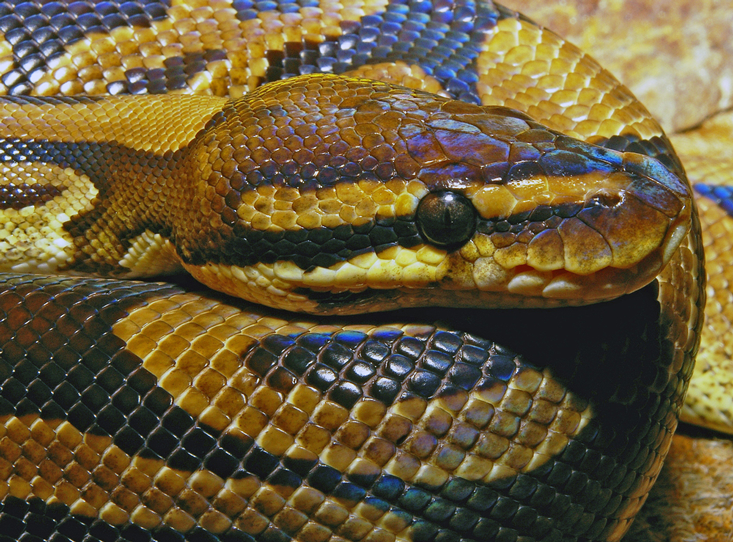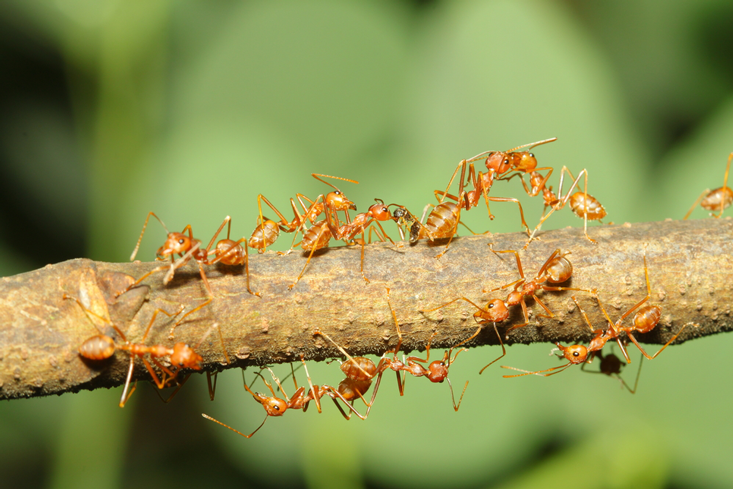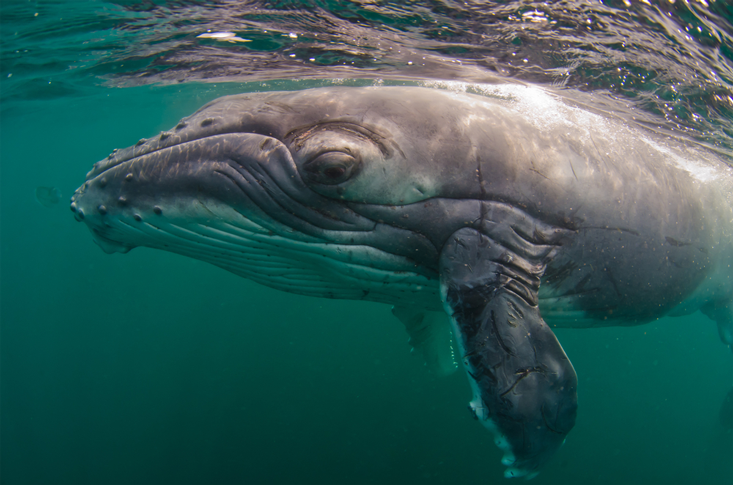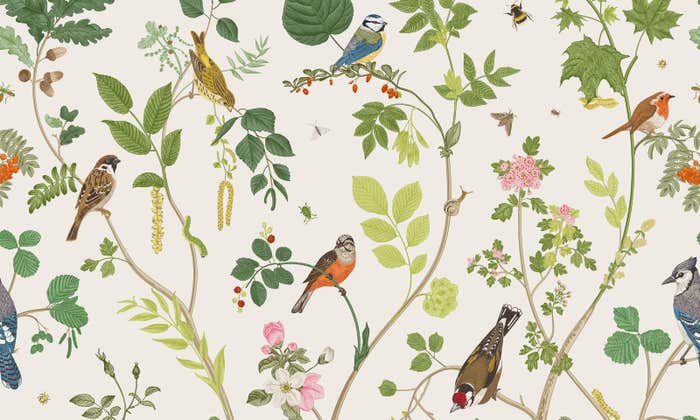Humans are a self-centered lot. We take our senses for granted and generally assume that other creatures possess the same ones we do—sight, hearing, smell, taste, or more complex perceptions such as the ability to tell apart the seasons.
But just like other abilities, senses evolve to support the daily functions of animals, plants, and the rest of life. Evolution tends to do away with senses that are not needed, especially if those senses are costly. Animals that evolve underground lifestyles often lose their eyesight. Separately, evolution also tends to favor a superior sense of smell and hearing in these same organisms. Since the survival of carnivores does not depend on their ability to find sugars, genetic mutations that rendered some of them unable to taste sweetness persisted. Some tropical insects evolved without the ability to use the length of days as a cue to the seasons, because in the tropics the seasons are not marked by changes in the length of days. It is easy to imagine other species experience the world as we do, be they our pets or even our plants, but the truth is each species has senses adapted for the life it lives, senses that lead it to experience a world different from our own.
Cats

Taste buds have evolved among animal species to lead us toward those things that we need and lead us away from those things we are best off avoiding. For most mammals, the ability to detect carbohydrates is a matter of survival. Simple sugars taste sweet because we need them (or at least we did before we learned how to artificially produce them in abundance). That’s why most mammals experience the taste of sugar as pleasant, but house cats and other felines are indifferent to sweets. Cat owners may claim that their beloved pets love ice cream and doughnuts, but it’s the fat that cats enjoy. Felines’ taste receptors can’t detect sugar. Humans, like most other mammals, have five different receptors—salty, bitter, sour, umami (savory), and sweet. The taste receptor for sweet is encoded in two genes that code for two proteins, both of which are involved in our ability to enjoy sugary treats. In cats, a chance mutation appears to have broken one of these genes, and this broken version persisted. That’s why tigers, lions, and your kitty will never have a sweet tooth. To her, the satiating tastes are the umami of meat and the saltiness of blood.
Common Moles
Eastern American moles are essentially blind—their tiny eyes hidden below fur and skin are useless in their underground world of tunnels and caves. Yet moles do well without seeing. They rely on their exceptional hearing and olfactory abilities. They detect sounds in two different ways: by feeling vibrations they pick up in their skin and by detecting low frequency sounds with their specialized ear bones—the sounds of worms tunneling through soil and the trampling of feet above ground. But moles also have a special ability to smell “in stereo.” Unlike humans in whom the odors picked up by the two nostrils funnel together to form one signal, a single odor, moles can tell the difference between what one nostril smells versus the other. They use this difference to tell from what direction the odor is coming—the same way humans use two ears to tell from what direction sounds come. The stereo nose enables moles to perceive the direction of odors much more quickly than we do, and swiftly move toward or away from an odor. A mole’s life is a series of easy dichotomies, even if nothing in this to and fro, is visible.
Royal Pythons

Snakes, such as royal pythons, lack both an external ear and an eardrum—the membrane that vibrates in response to sound waves. As a result, they can’t hear sounds the way we do. Royal pythons perceive sounds through vibrations of the ground or any other substrate they are on. Through the python’s scaly skin, as well as its bone and muscle, these vibrations are transmitted to the snake’s columella—a small ear bone—and then to its brain. As a result, pythons miss the tweets and squeaks of birds, crickets, and frogs. A birds’ song has no beauty to a snake—but its footsteps do. If a songbird stepped near a hungry python, the reptile could sense the faint vibrations produced by each foot and know that dinner has arrived.
Tropical Ants

The ability to identify seasons seems a basic one, but some tropical ants, such as Pharaoh ants, lack the skill. Their chronobiology—the brain’s ability to pick up time cues from the environment—didn’t evolve to detect seasonal changes in day length, because day lengths in the tropics do not signal changes in climate in the predictable way they do in more temperate realms. When scientists bring them to places where seasons change (such as to Harvard University where an escaped population of Pharaoh ants long lived indoors), Pharaoh ants don’t sense the time of year and don’t adjust their life cycles accordingly. As colder weather arrives, local ants stop producing eggs and start stocking up food, but the tropical ones keep laying eggs and foraging. When weather gets cold enough to kill them, Pharaoh ants stop venturing out and may enter a type of torpor, which is an emergency reaction rather than a seasonal process. Having failed to store food, they eat their own eggs instead. And because chronobiology is an innate ability rather than an acquired one, the ants never learn to tell the time of year.
Toothed Whales

In his classic novel, Herman Melville says of the great white whale, Moby Dick, that he saw a different world through each of his enormous eyes, which may have been true, but what Moby Dick seems unlikely to have perceived is Ahab’s stink.
Toothed whales lack the part of the brain responsible for detecting airborne scents. These marine mammals, including dolphins, porpoises, belugas, narwhals, and beaked and sperm whales, are descendants of land mammals, who returned to sea about 50 million years ago. Land dwellers use the sense of smell for finding food, sensing predators and courtship. In the water, olfaction is less useful and echolocation appears to have proven to be a better tool. Olfaction begins in the nasal cavity where volatile molecules latch on to receptors, which then transmit signals via the olfactory nerve to the olfactory bulb in the brain. Toothed whales lost their olfactory nerve and bulb. As they lift their big heads out of the water, they feel the wind and see the horizon, but they can’t smell the salt in the air, the sea’s fishy stink, or sweaty unwashed humans that hunt them.
Lazy Corn and Peas

Nearly all organisms have a sense of gravity—without it things go wrong. This lesson is most obvious in the leaves of lazy corn. Most plants on earth can tell up from down using a hormone called auxin, the distribution of which tells plants, among other things, which way is up and which way is down. Cells in different plant parts respond to auxin in different ways. When it’s transported to the bottom of roots, auxin makes cells grow slowly, which causes roots to bend downward. When it’s transported to the bottom of shoots, it makes cells grow fast, which causes shoots to bend upward.
But in lazy corn and some other inbred crop strains, including lazy peas, the gene that encodes for a protein that helps move auxin downward in the plant displays an unusual, mutant, form. As a result, these plants lack an ordinary sense of gravity. Lazy pea’s roots grow every which way—up and down, and even away from the soil. Lazy corn’s leaves lie down rather than reach for the sun, unaware of where up and down is. These mutations appear to bear no advantages for these plants (although they have helped scientists discern the genetics of how plants detect gravity). Yet the plants don’t have any structural defects, they simply lack the ability to know which way is up and so lie down, which is what earned them their nickname.
Rob Dunn is an evolutionary biologist at the North Carolina State University where he studies species we interact with every day but tend to overlook—including those that live in our belly buttons. He is the author of Every Living Thing, The Wild Life of Our Bodies and The Man Who Touched His Own Heart.


























